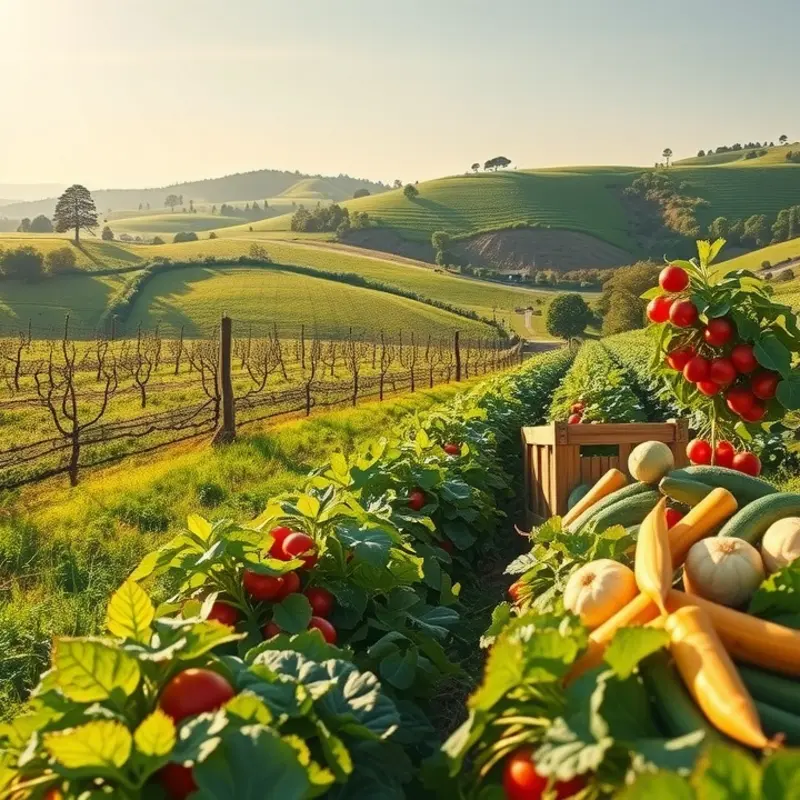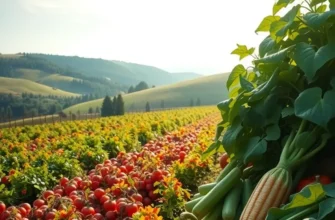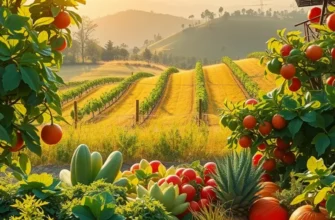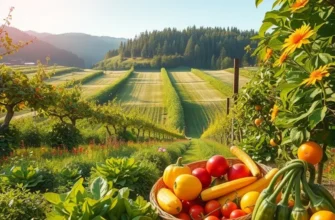Storing vegetables properly not only extends their shelf life but also helps minimize waste and manage your food supply more effectively. With a few simple techniques, you can ensure that your veggies stay fresh and tasty for longer periods. This guide delves into crucial tips and methods that anyone can implement to optimize their vegetable storage practices.
Choosing the Right Storage Method

Understanding how to store vegetables effectively is crucial for maintaining their freshness and reducing waste. Different vegetables demand different storage conditions, and categorizing them correctly can significantly prolong their lifespan. Let’s look at the best practices for various types of vegetables, focusing on refrigeration, counter storage, and proper handling.
Refrigeration
The refrigerator is the go-to method for storing many vegetables, but not everything belongs there. Vegetables like leafy greens, carrots, broccoli, and bell peppers thrive in the crisp, cool environment of the fridge. To maximize the shelf life of leafy greens, ensure they’re stored in a container or bag with a damp paper towel to maintain moisture without saturating them.
On the other hand, some vegetables should be kept away from refrigeration. Tomatoes, for instance, lose their flavor and texture when stored in the fridge. The cool temperatures alter their internal structure, making them mealy. Similarly, potatoes should be stored in a cool, dark place, but not the refrigerator, as cold temperatures convert their starch to sugar, impacting flavor and cooking results. A pantry or a dark corner cupboard works well for such vegetables.
Counter Storage
Certain vegetables, such as avocados, bananas, and melons, do better when stored at room temperature, at least until they ripen. Once they’ve reached the desired ripeness, they can be transferred to the fridge to prolong their usability. Ethylene-sensitive vegetables, such as leafy greens and cucumbers, should be stored separately from ethylene producers, like bananas and tomatoes, to prevent premature spoilage.
Handling Methods
Proper handling is essential to prevent spoilage and damage. For instance, avoid washing vegetables until you’re ready to use them. Washing too soon can introduce moisture that accelerates deterioration, particularly for delicate items like mushrooms and herbs. Additionally, bruising can shorten a vegetable’s life; handle all produce gently, and store items that bruise easily, like peaches and tomatoes, with care.
Moreover, storing cut vegetables is different from whole ones. Once cut, vegetables have a limited time before they lose their quality. Keep cut produce in airtight containers in the fridge to prevent drying and contamination, as outlined in this eco-smart kitchen storage guide.
Categorizing Vegetables for Storage
For optimal storage, it’s helpful to categorize vegetables according to their storage needs. Cruciferous and root vegetables like cabbage and carrots are best suited for the refrigerator. Tubers and alliums like potatoes and onions are perfect for a cool, dark pantry. Meanwhile, most fruits and some vegetables like squash are more adaptable but generally prefer ambient temperatures until fully ripe.
By understanding the nuances of vegetable storage, you can make informed decisions that keep your produce fresh and minimize waste. Thoughtfully organizing your kitchen storage based on these guidelines will ensure you get the most out of your vegetables, helping you maintain a sustainable and eco-friendly kitchen environment.
Best Practices for Storing Common Vegetables

Storing vegetables properly is crucial for prolonging their shelf life. Let’s explore the best practices for storing leafy greens, carrots, and potatoes, with a focus on temperature, humidity control, and container selection.
Leafy Greens
Leafy greens are delicate and can quickly wilt if not stored correctly. To maintain their freshness, store them in the crisper drawer of your refrigerator, where the humidity is higher. Wrap them loosely in a slightly damp paper towel and place them in a breathable bag. Avoid sealed plastic bags, as they can trap moisture and cause spoilage. Ensure the temperature in your refrigerator is between 34-38°F (1-3°C) to keep the greens crisp and vibrant.
Carrots
Carrots require cool temperatures and higher humidity for optimal storage. Keep them in the refrigerator’s crisper drawer to take advantage of its humidity control. Trim any green tops before storing, as they can draw moisture from the carrots, causing them to shrivel. For best results, store carrots in a perforated plastic bag to maintain moisture balance. Avoid placing them near ethylene-producing fruits like apples, which can speed up ripening and spoilage.
Potatoes
Potatoes thrive in cool, dark, and well-ventilated conditions. Store them in a pantry or cellar where the temperature is stable, ideally between 45-50°F (7-10°C). Ensure they are kept away from light to prevent sprouting and greening. A breathable container, like a mesh bag or open basket, allows airflow and helps avoid moisture build-up. Never store potatoes in the refrigerator, as the cold temperature can convert their starches into sugars, affecting their flavor and texture.
Incorporating these practices into your kitchen routine not only preserves the quality of your vegetables but also reduces waste. For more insights on reducing kitchen waste smartly, check out our eco-smart kitchen storage guide. Understanding the specific needs of each vegetable allows you to enjoy them at their peak freshness longer, contributing to both delicious meals and sustainable living.
Final words
Effective vegetable storage techniques can drastically reduce waste and ensure that your produce remains at its best for longer. By understanding the specific needs of each vegetable and utilizing the right storage methods, you can improve your food management at home. Not only does this lead to more sustainable practices, but it also saves you money in the long run. The key takeaway is to assess your vegetables’ storage requirements and consistently apply these strategies to enjoy fresh, delicious produce every day.







